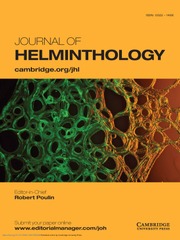No CrossRef data available.
Article contents
Receptors for growth and development of Schistosoma mansoni
Published online by Cambridge University Press: 14 February 2025
Abstract
The growth and development of schistosomes are tightly regulated by various receptors throughout their life cycle. Each stage of the parasite inhabits a distinct habitat and responds to different factors that drive its growth and development. With two hosts involved in its life cycle (mammalian and snail), the parasite must go through additional free-living stages to transition between them. Moreover, communication between male and female worms is essential for the maturation of females. The ability of adult schistosomes to survive in human hosts for up to thirty years demonstrates their capacity to efficiently utilize host nutrients for metabolic processes and growth. In Schistosoma mansoni, receptors mediate the utilization of growth factors derived from both the parasite itself and the host. Nuclear receptors, in particular, collaborate with other proteins to regulate the expression of genes essential for various developmental functions. Receptors also play a pivotal role in RNA export, which is crucial for the parasite development. Additionally, neurotransmitter receptors are essential for the growth and development of larval stages. This review aims to elucidate the mechanisms by which these receptors regulate cell proliferation, differentiation, and maturation throughout the parasite life cycle. Understanding these processes could provide insights into the role of receptors in Schistosoma mansoni development and potentially lead to innovative therapeutic strategies to combat human schistosomiasis.
- Type
- Review Article
- Information
- Copyright
- © The Author(s), 2025. Published by Cambridge University Press


